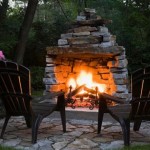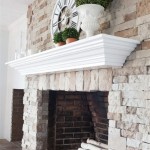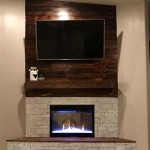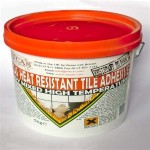Heatilator Fireplace Fans and Blowers: Enhancing Fireplace Efficiency and Comfort
Heatilator is a prominent name in the fireplace industry, recognized for its innovation and quality in providing efficient and aesthetically pleasing heating solutions. Fireplace fans and blowers are integral components of many Heatilator fireplaces, significantly impacting their performance and the distribution of heat throughout a living space. These devices are designed to circulate heated air more effectively, maximizing the warmth generated by the fireplace and enhancing overall comfort.
The functionality of a fireplace extends beyond simply providing a visual focal point. A primary purpose of a fireplace is to heat a room, and in many cases, supplement a home's existing heating system. However, the natural convection of a traditional fireplace often results in much of the heat rising directly up the chimney, leading to inefficient heating. This is where fans and blowers play a vital role, forcing heated air out of the fireplace and into the room, thereby increasing the amount of usable heat derived from the fire. Optimizing fireplace efficiency reduces fuel consumption, whether wood, gas, or other fuel sources, and can contribute to lower heating bills.
Understanding the Functionality of Fireplace Fans and Blowers
Fireplace fans and blowers operate on a relatively straightforward principle: they use an electric motor to drive a fan or blower wheel, which in turn moves air. The placement of the fan or blower within the fireplace structure is crucial to its effectiveness. Typically, these devices are located near the firebox or within the firebox itself, allowing them to draw in heated air and push it out into the room through vents or louvers.
The design of the fan or blower is critical for maximizing airflow and minimizing noise. Blower wheels are often preferred for their ability to move larger volumes of air at lower speeds, resulting in quieter operation. Fan blades, on the other hand, might be used in certain models for their compact size or specific airflow characteristics. The materials used in the construction of these components are also important, as they must withstand the high temperatures associated with fireplace operation. Heat-resistant metals and durable plastics are common materials used in the manufacturing process.
Many Heatilator fireplace models come equipped with built-in fans or blowers. However, for older models or specific applications, aftermarket kits are available. These kits allow homeowners to retrofit their existing fireplaces with fans or blowers, increasing their heating efficiency. The installation process for these kits can vary in complexity, and it is often recommended to consult with a qualified technician to ensure proper installation and safe operation.
Benefits of Using Heatilator Fireplace Fans and Blowers
The implementation of a Heatilator fireplace fan or blower offers a multitude of benefits, directly impacting the user's comfort and the fireplace's overall performance. The most significant advantage is the improved distribution of heat. Without a fan or blower, the majority of the heat generated by the fireplace tends to concentrate near the fireplace itself, creating uneven heating throughout the room. A fan or blower helps to circulate this heat more evenly, warming distant corners of the room and reducing cold spots.
Another key benefit is increased energy efficiency. By distributing heat more effectively, less fuel is required to maintain a comfortable temperature. This translates to lower fuel consumption for wood-burning fireplaces, and reduced gas bills for gas fireplaces. Over time, these savings can significantly offset the initial cost of the fan or blower. Furthermore, improved efficiency can lead to a more environmentally friendly heating option.
The enhanced warmth and comfort provided by a fireplace fan or blower contribute to a more enjoyable fireplace experience. The ability to quickly and effectively warm a room allows users to better appreciate the ambiance and aesthetic appeal of their fireplace. This is particularly valuable in colder climates or during winter months, where supplemental heating becomes essential. The consistent temperature maintained by the fan or blower also prevents fluctuations in heat, creating a more stable and comfortable living environment.
Beyond the immediate benefits of improved heating, a fireplace fan or blower can also contribute to the longevity of the fireplace itself. By preventing excessive heat buildup in certain areas of the firebox, the fan or blower can help to reduce the risk of damage to the fireplace structure. This can extend the lifespan of the fireplace and minimize the need for costly repairs or replacements.
Considerations When Selecting and Maintaining Heatilator Fireplace Fans and Blowers
Selecting the appropriate Heatilator fireplace fan or blower requires careful consideration of several factors. The size of the fireplace is a primary determinant, as larger fireplaces typically require more powerful fans or blowers to effectively circulate heat. The BTU (British Thermal Unit) rating of the fireplace provides an indication of its heating capacity, which can be used to guide the selection process. It's crucial to select a fan or blower that is appropriately sized for the fireplace to ensure optimal performance.
The noise level of the fan or blower is another important consideration. Some models are designed for quieter operation than others. When comparing models, paying attention to the decibel (dB) rating can provide an indication of the noise level. Personal preferences for noise tolerance vary, so it's advisable to choose a model that aligns with individual comfort levels. Often, models with variable speed controls offer a balance of airflow and noise reduction.
Installation requirements should also be carefully assessed. Some fans or blowers are designed for easy DIY installation, while others may require professional installation. The complexity of the installation process depends on the specific fireplace model and the type of fan or blower being installed. Consulting with a qualified technician is recommended if there is any uncertainty about the installation process.
Proper maintenance is essential for maximizing the lifespan and performance of a Heatilator fireplace fan or blower. Regular cleaning is crucial to prevent dust and debris from accumulating on the fan blades or blower wheel, which can reduce airflow and increase noise. The frequency of cleaning will depend on the usage of the fireplace and the amount of dust in the environment. Periodically inspecting the fan or blower for any signs of damage, such as cracks or loose components, is also important. Addressing any issues promptly can prevent more significant problems from developing.
Lubricating the motor bearings of the fan or blower, if applicable, can help to ensure smooth and quiet operation. The manufacturer's instructions should be followed for lubrication procedures and recommended lubricants. In some cases, the motor bearings may be sealed and require no lubrication. Replacing the fan or blower if it becomes excessively noisy or fails to operate properly is necessary. Continuing to use a malfunctioning fan or blower can potentially damage the fireplace or pose a safety hazard.
Ensuring the fireplace is properly ventilated is also important. A blocked chimney or flue can cause dangerous buildup of carbon monoxide, even with a fan or blower operating. Regular chimney inspections and cleanings by a qualified professional are crucial for maintaining safe and efficient fireplace operation. Carbon monoxide detectors should be installed and maintained according to manufacturer's instructions to provide additional protection against this potentially deadly gas.
Selecting a Heatilator fireplace fan or blower is a worthwhile investment for anyone seeking to enhance the efficiency and comfort of their fireplace. By understanding the functionality, benefits, and maintenance requirements of these devices, individuals can make informed decisions and enjoy a warmer, more comfortable living space. The improved heat distribution, energy savings, and enhanced fireplace experience associated with fireplace fans and blowers make them a valuable addition to any home with a fireplace.

Installing A Fireplace Blower Gfk4 Gfk4a In Heatilator Natural Gas

Heatilator Fireplace Blower Fan Kit Gfk4b Hearth Trends

Fireplaceblowers Fireplace Blower Accesories Tools

Heatilator Blwr 4b Fireplace Blower Fan Hearth Trends

Blower Kit For Heatilator Fireplaces Gfk4

Fireplaceblowers Gfk4 Fireplace Blower Kit For Heatilator Majestic Cfm

Gfk 160a Blower System Heatilator Fireplaces

Fireplace Fan Blower Fk12 Fits For Heatilator Majestic Lennox Marti Grillpartsreplacement Bbq Parts Retailer

Heat N Glo Heatilator Blower 812 4900 Friendly Fires

Blower For Heatilator Gas Fireplaces Gfk 160 Only
Related Posts








